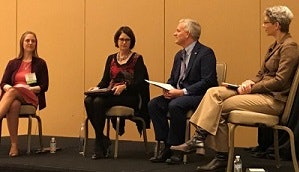Higher education leaders and the U.S. Department of Education’s Office of Civil Rights recently gathered in the same room to discuss solutions to the challenges that institutions face addressing sexual misconduct on campus.
During the session last week at the 2018 American Council on Education (ACE) Conference titled “Our Campuses and the Office of Civil Rights: Sexual Misconduct and the Promise of Title IX,” panelists acknowledged that the complexity of handling complaints makes it hard to find a singular solution when strong views and opinions are expressed on all sides about due process. Among the solutions discussed was a push for more collaboration between higher education institutions and the Office of Civil Rights around Title IX regulations and policies.
Sexual misconduct “is a societal problem that has manifested on our campuses,” said Dr. Jonathan R. Alger, president of James Madison University. “They’re expecting us to replicate what they see in criminal courts, but relatively few students want to go that route.”
Michele Minter, vice provost for institutional equity and diversity at Princeton University, said sexual misconduct cases can be “very emotional” for those involved. There has been a tendency to oversimplify narratives and solutions regarding the issue, despite the fact that institutions vary widely in size and student demographics, she said.
Within the context of the national #MeToo movement, institutions are seeing an increase in reports of sexual misconduct. That trend should not cause alarm, officials said, because it signals that more students and faculty feel comfortable reporting an incident.
Candice Jackson, deputy assistant secretary for strategic operations and outreach at the OCR, said she hopes that the “positive signal” of increased reports eventually will lead to a decline in reports as “behavior and respect for each other” improves.
“But that’s a long-term process,” she added.















